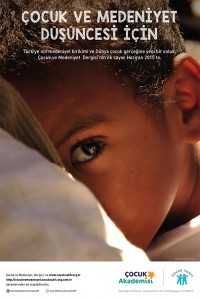Çocuk Edebiyatında Görsel Öğe
Çocuk, çocuk edebiyatı, görsel öğe, estetik, pedagoji
Visual Element in Children’s Literature
Child, children’s literature, visual element, aesthetics, pedagogy,
___
- Aristoteles. (1983). Poetika (İ. Tunalı, Çev.). İstanbul: Remzi Kitabevi.
- Burlingham, C. (1997a). Publishing for children. K. Jacobson (Ed.). Picturing Childhood, Illustrated Children’s Books From University of California Collections 1550-1990. Los Angeles: Grunwald Center for he Graphic Arts and the Department of Special Collectioons at the University Reaserch Library, pp. 19-28.
- Burlingham, C. (1997b). The twentieth centruy. K. Jacobson (Ed.). Picturing Childhood, Illustrated Children’s Books From University of California Collections 1550-1990. Los Angeles: Grunwald Center for he Graphic Arts and the Department of Special Collectioons at the University Reaserch Library, pp. 49-60..
- Süreya, C. (1995). Sevda sözleri. İstanbul: Yapı Kredi Yayınları.
- Comenius, J. A. (1887). The orbis pictus of John Amos Comenius. C.W. Barden Puplishing.
- Carroll, L. (1916). Alice’s adventures in wonderland. New York: Sam’l Gabriel Sons & Company.
- Gurbetoğlu, A. (2006). II. Meşrutiyet döneminde yayımlanan çocuk dergilerinin eğitim açısından incelenmesi (1908–1918) (Yayımlanmamış doktora tezi). Ankara Üniversitesi Eğitim Bilimleri Enstitüsü, Ankara.
- Inhelder, B. ve Piaget, J. (2002). The growth of logical thiking from childhood to adolescence. Rutledge.
- Kant, I. (1904). Educational theory of Immanuel Kant (E. F. Buchner, Çev.). Philadelphia: J. B. Lippincott Company.
- Klemin, D. (1966). The art of art for children’s books: A contemporary survey. New York: Clarkson N. Potter, Inc.
- Köprülü, F. (2004). Nasreddin Hoca. Ankara: Akçağ Yayınları.
- Locke, J. (1922). The educational writings of John Locke. Cambridge: Cambridge University Press.
- Ortaylı, İ. (1988). Tanzimat döneminde çocuk edebiyatı üzerine. Sadun Aren’e armağan. Ankara: Mülkiyeliler Birliği Yayınları.
- Otto, S. (1987). Resimli çocuk kitaplarının eleştirisi üzerine. M. R. Şirin (Ed.). Çocuk Edebiyatı Yıllığı. İstanbul: Gökyüzü Yayınları.
- Özünel, Ş. Ç. (2000). Çocuk kitaplarındaki görsel anlatımın eğitimdeki yeri. S. Sever (Ed.). I. Ulusal Çocuk Kitapları Sempozyumu Bildiri Metinleri. Ankara: Pegem Yayınları.
- Sever, S. (2008). Çocuk ve edebiyatı. İzmir: TUDEM Yayınları.
- Şirin, M. R. (2003). Kim çocuk yazarıdır?. Virgül Dergisi, 68.
- Pamuk, O. (2006). Benim adım kırmızı. İstanbul: İletişim Yayınları.
- Pearson, E. (1890). Banbury chap books and nursery toy book literature with impressions from several hundred orginal wood-cut blocks. London: Arthur Reader.
- Piaget, J. (1928). Judgment and reasoning in the child. New York: Harcourt, Barace and Company.
- Pitiri, E. (2007). Art books for early childhood classroom communication. Art Education, 60(2), 33-39.
- Postman, N. (1995). Çocukluğun yok oluşu (K. İnal, Çev.). Ankara: İmge Yayınları.
- Rousseau, J.J. (1979). Emile (A. Bloom, Çev.). United States of Ameraca: Bacic Books.
- Tanpınar, A. H. (1996). Yaşadığım gibi. İstanbul: Dergâh Yayınları.
- Yavuzer, H. (2001). Resimleriyle çocuk: Resimleriyle çocuğu tanıma. İstanbul: Remzi Kitabevi.
- ISSN: 2458-8431
- Başlangıç: 2016
- Yayıncı: Çocuk Vakfı
Sağlık Çalışanlarının Çocuk İhmali ve İstismarını Tanıma Düzeyleri
Hatice Aydan Işık METİNYURT, Hatice Yıldırım SARI
Bebeklerde Uygulanan Geleneksel Yöntemler
Zeynep ARABACI, Jülide Gülizar YILDIRIM, Bumin Nuri DÜNDAR, Zeynep KADAM
Fahri TEMİZYÜREK, Hasan Basri KANSIZOĞLU
Üstün Yeteneklilerin Eğitiminde Mentorluk Programı: Uluslararası Bağlamda Bir İnceleme
Otizmi Olan Çocukların Beslenme Durumunun Değerlendirilmesi
Alev GİRLİ, Semra Öztürk ÖZGÖNENEL, Hatice Yıldırım SARI, Esra ARDAHAN
Çocuk ve İlk Gençlik Edebiyatı Özel Sayısı Üzerine
Hakan Şevki AYVACI, Özlem YURT
Çocuk Yazınında “Umut” ve “Mutlu Son” İlişkisi Üzerine Bir İnceleme
